William John Bryce was born on Woolieburn Farm, Lanarkshire, Scotland in 1861.
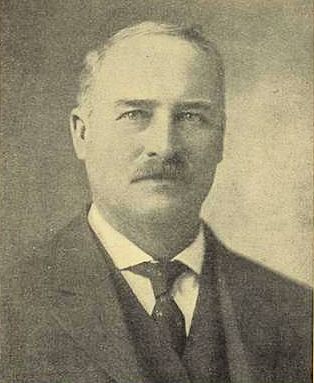 When Bryce was eight years old his family immigrated to Canada. William’s father was a masonry contractor, and the brick doesn’t fall far from the hod: In Canada young William learned his father’s trade. About 1881 William moved to Chicago and worked as a journeyman brick mason. He moved to Fort Worth in 1883 and continued to work as a brick mason.
When Bryce was eight years old his family immigrated to Canada. William’s father was a masonry contractor, and the brick doesn’t fall far from the hod: In Canada young William learned his father’s trade. About 1881 William moved to Chicago and worked as a journeyman brick mason. He moved to Fort Worth in 1883 and continued to work as a brick mason.
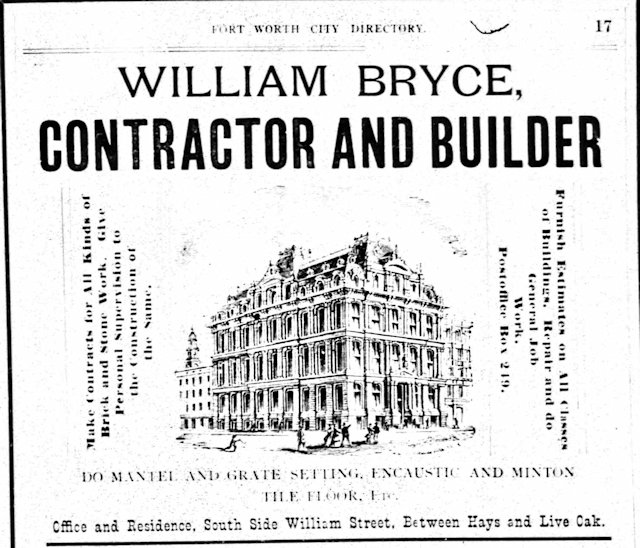 “For three years I carried my office under my hat,” Bryce later recalled.
“For three years I carried my office under my hat,” Bryce later recalled.
But by 1885 Bryce had opened his own brick contracting company. His home and office were located northeast of downtown in today’s Rock Island neighborhood. Ad is from the 1885 city directory.
In 1887 Scots-born Bryce married Catherine Roberts of England.
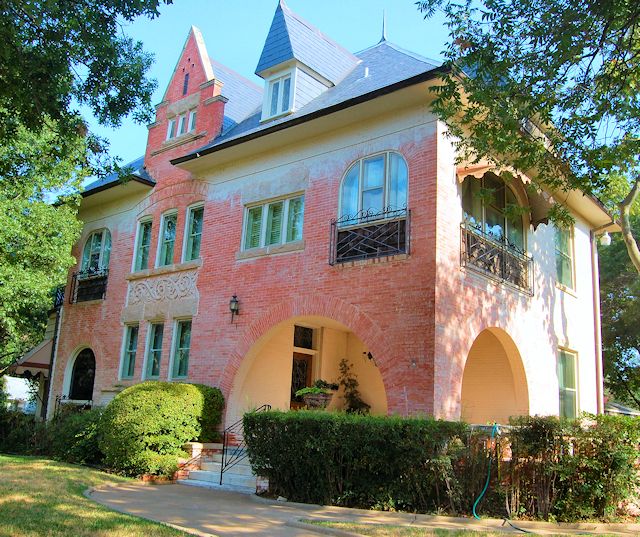 Six years later Bryce the master mason built one of the first—and most substantial—houses in Arlington Heights as Humphrey Chamberlin developed the new addition.
Six years later Bryce the master mason built one of the first—and most substantial—houses in Arlington Heights as Humphrey Chamberlin developed the new addition.
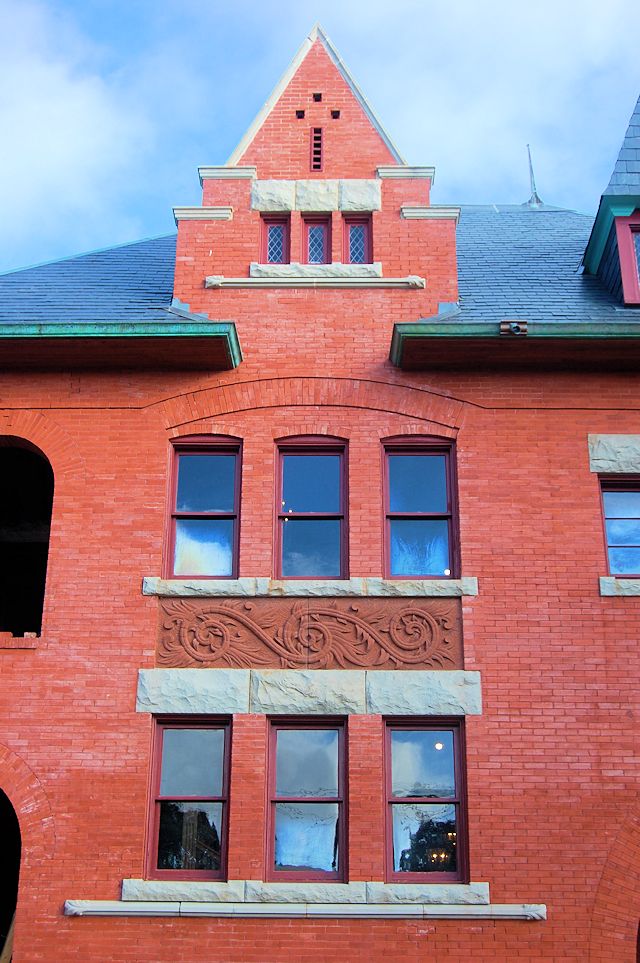 The house was designed by Messer, Sanguinet, and Messer, who designed other early houses in Arlington Heights.
The house was designed by Messer, Sanguinet, and Messer, who designed other early houses in Arlington Heights.
 Bryce named his home “Fairview.” This is the house’s carriage step.
Bryce named his home “Fairview.” This is the house’s carriage step.
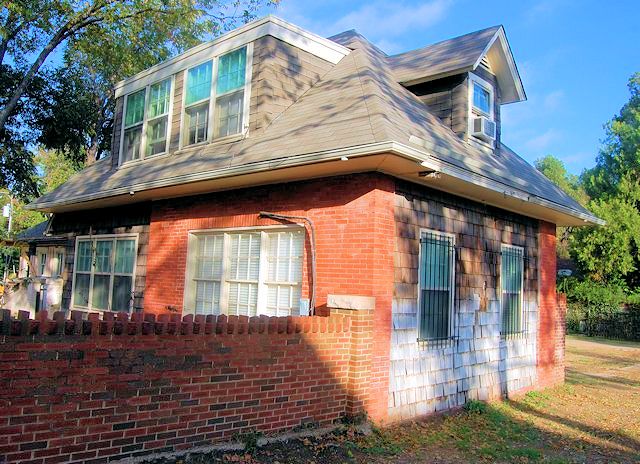 This is Fairview’s carriage house.
This is Fairview’s carriage house.
 Bryce was a founder and president of Fort Worth Country Club, which became River Crest Country Club. In 1909 the country club began sponsoring a golf tournament the winner of which would be awarded the Bryce Cup.
Bryce was a founder and president of Fort Worth Country Club, which became River Crest Country Club. In 1909 the country club began sponsoring a golf tournament the winner of which would be awarded the Bryce Cup.
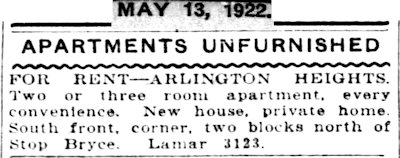 There was a Stop Bryce on the Arlington Heights streetcar line on today’s Camp Bowie Boulevard.
There was a Stop Bryce on the Arlington Heights streetcar line on today’s Camp Bowie Boulevard.
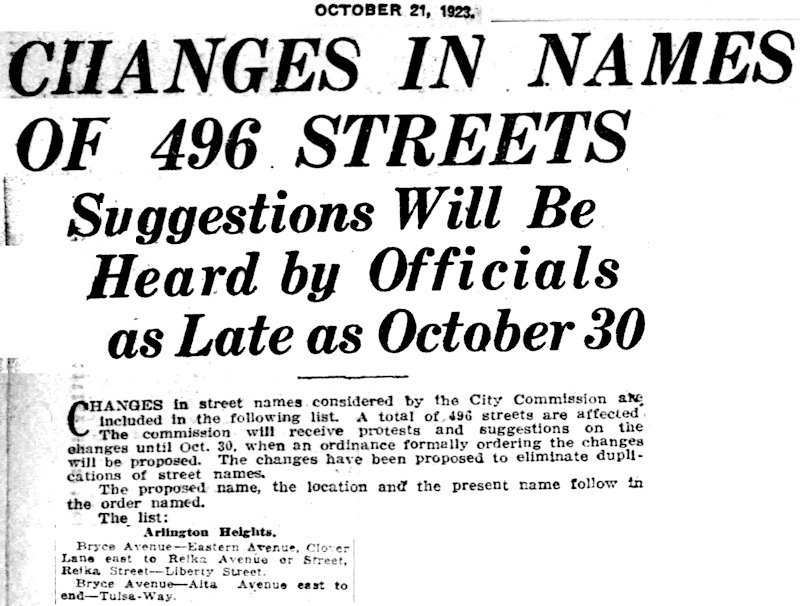
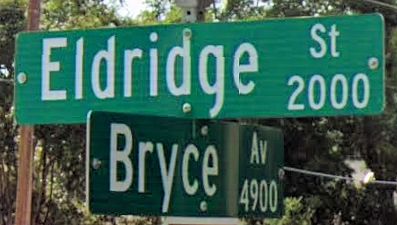 But not until 1923 was the street in front of Fairview named for Bryce. Fort Worth had annexed Arlington Heights and several other suburbs in 1922, resulting in duplication of many street names.
But not until 1923 was the street in front of Fairview named for Bryce. Fort Worth had annexed Arlington Heights and several other suburbs in 1922, resulting in duplication of many street names.
In 1924 William Bryce became involved in local politics. That year the Citizens’ Association for Civic Advancement formed to campaign advocating a new city charter, which provided for a council-manager form of municipal government.
The charter was approved in December 1924.
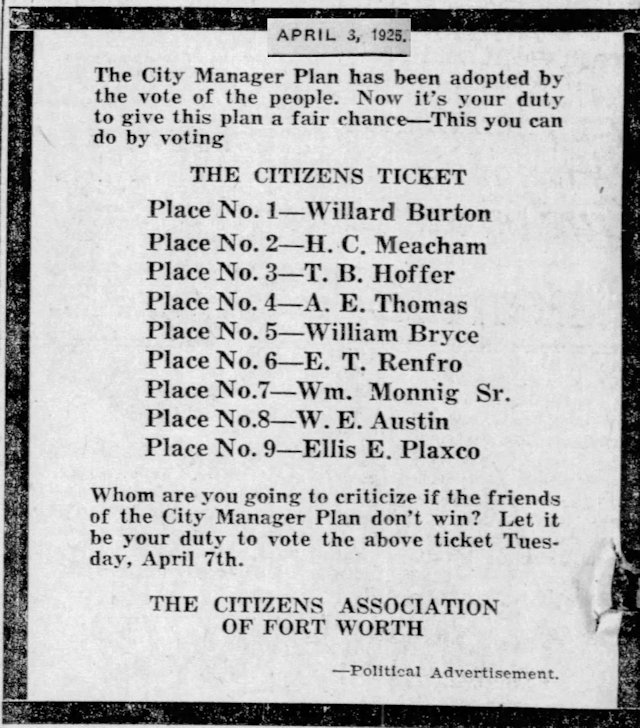 The first city election under the new charter was held in April 1925. Citizens’ Association fielded a slate of nine candidates, including Bryce, Henry Clay Meacham, and William Monnig, for city council.
The first city election under the new charter was held in April 1925. Citizens’ Association fielded a slate of nine candidates, including Bryce, Henry Clay Meacham, and William Monnig, for city council.
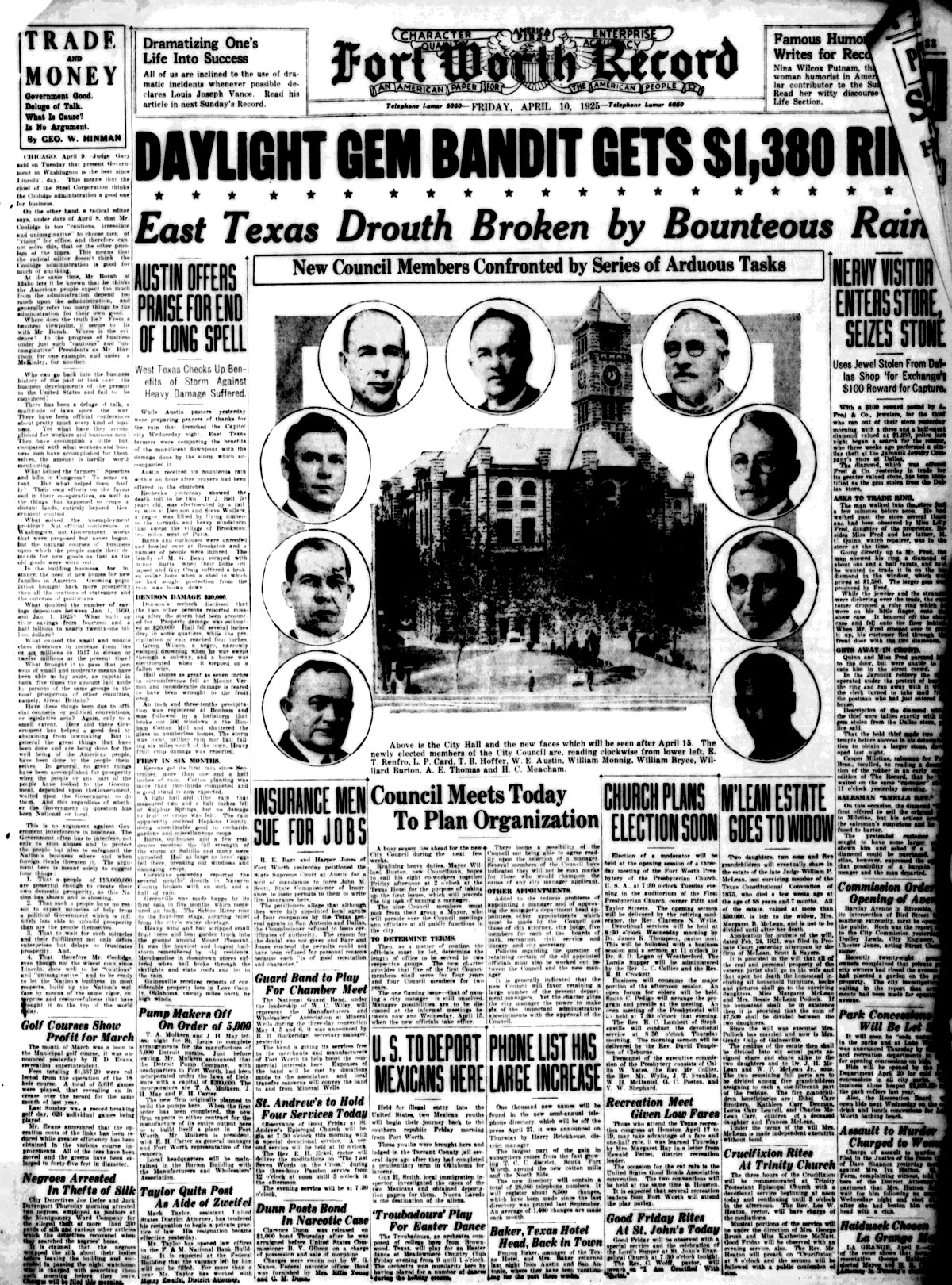 All nine were elected. Bryce and the other eight councilmen elected Meacham mayor. The photo shows the 1893 city hall.
All nine were elected. Bryce and the other eight councilmen elected Meacham mayor. The photo shows the 1893 city hall.
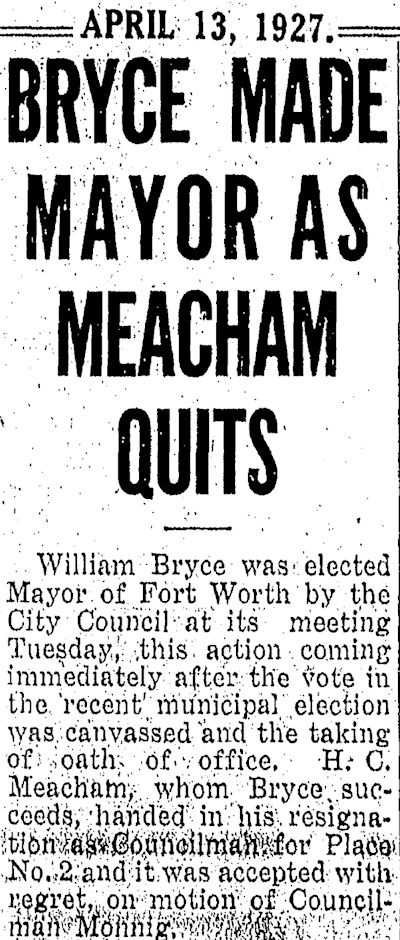 In 1927 Bryce traded the trowel for the gavel: He became mayor upon the resignation of Meacham.
In 1927 Bryce traded the trowel for the gavel: He became mayor upon the resignation of Meacham.
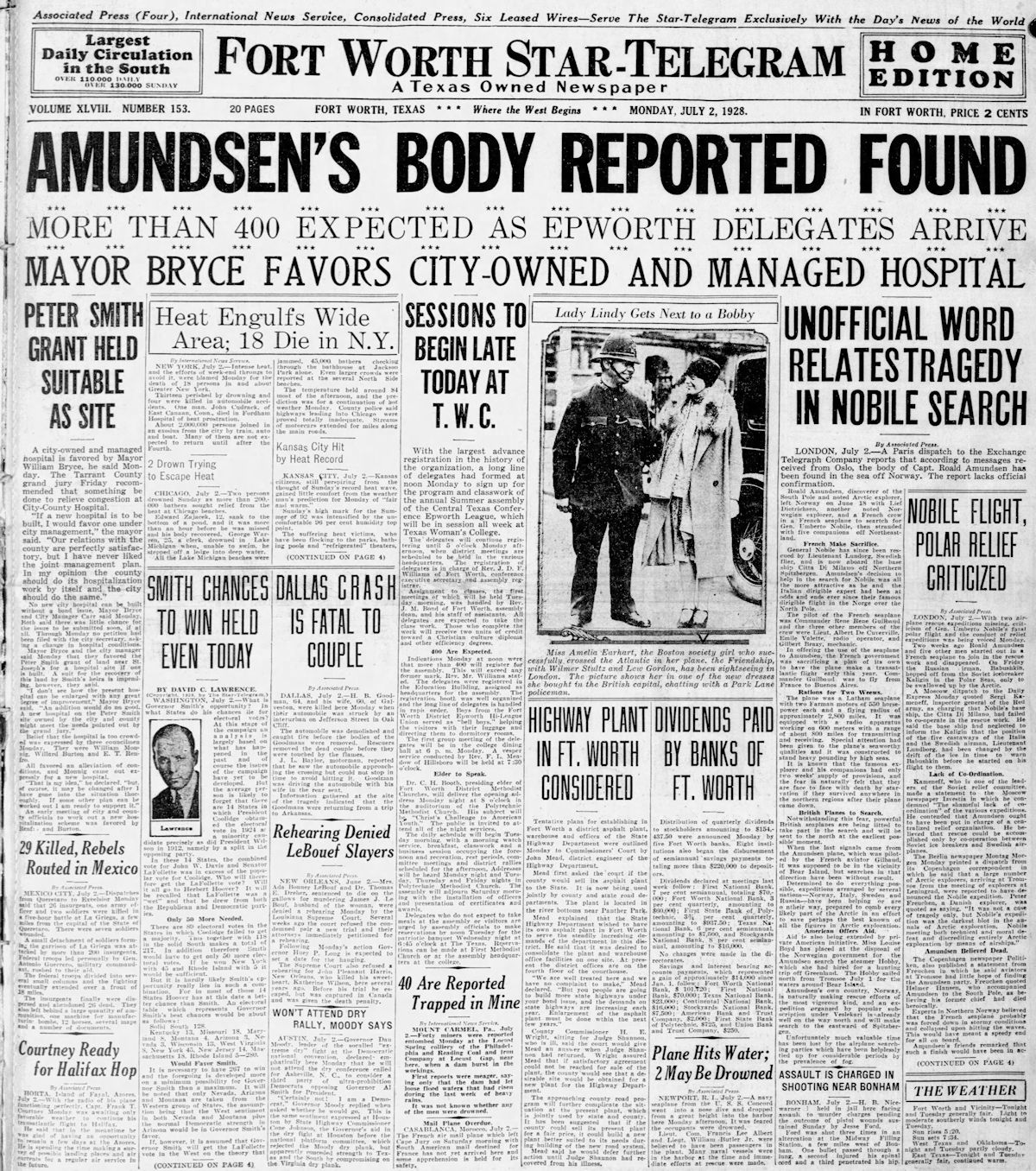 Among the issues that Bryce faced as mayor was the need for a new hospital to replace City-County Hospital, built in 1914. Bryce favored a city-owned hospital, not a joint city-county hospital. He also favored building the hospital on land that had been donated by John Peter Smith.
Among the issues that Bryce faced as mayor was the need for a new hospital to replace City-County Hospital, built in 1914. Bryce favored a city-owned hospital, not a joint city-county hospital. He also favored building the hospital on land that had been donated by John Peter Smith.
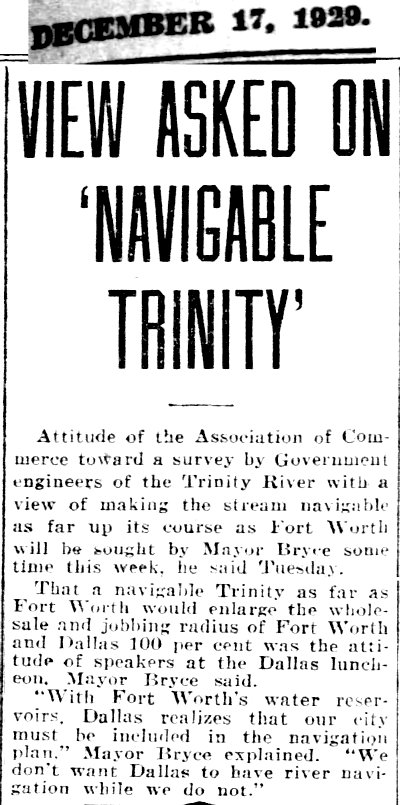 Another issue was canalization of the Trinity River from the gulf to Fort Worth, which Mayor Bryce, like Amon Carter and other civic leaders, advocated. “We don’t want Dallas to have river navigation while we do not,” Bryce said in 1929.
Another issue was canalization of the Trinity River from the gulf to Fort Worth, which Mayor Bryce, like Amon Carter and other civic leaders, advocated. “We don’t want Dallas to have river navigation while we do not,” Bryce said in 1929.
Canalization never happened, of course. And Bryce batted only .500 on the hospital issue: In 1939 the new hospital opened on the Smith land, but like its predecessor, the new hospital was operated by the city and the county.
The new hospital was not named for John Peter Smith until 1954.
It is fitting that Bryce, a builder, was mayor during much of Fort Worth’s building boom of 1926-1934. Bryce’s construction company built the Texas Brewing Company brewery (1890), the first Worth Hotel (1894), Knights of Pythias lodge hall (1901), the Livestock Exchange Building (1903) and other buildings at the packing plants and stockyards, Cobden Building (built in 1909 to house the North Side’s Prospect telephone exchange) on North Main, George C. Clarke Elementary School (1914), Fort Worth Club Building (1915, now the Ashton Hotel), the original building of Fort Worth High School (1918) on Cannon Street, the two stone towers on Park Place Avenue at Forest Park Boulevard (1918), and Temple Beth-El (1920).
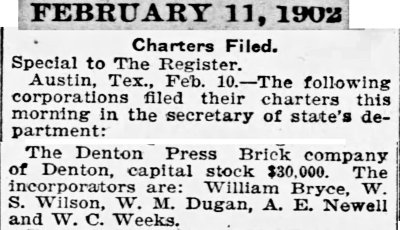 Some of those early projects were built with brick made by Bryce’s Denton Press Brick Company, which Acme Brick Company bought in 1913.
Some of those early projects were built with brick made by Bryce’s Denton Press Brick Company, which Acme Brick Company bought in 1913.
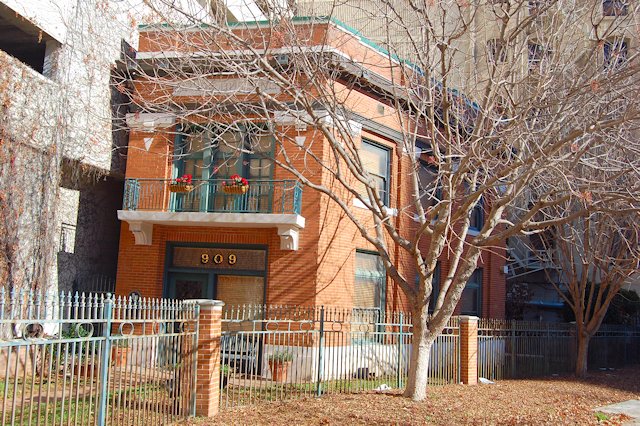 When the five-sided Bryce Building was built on its odd-shaped lot in 1910 it stood in the shadow of the Carnegie Public Library. When the new library was built in 1939 the Bryce Building stood in the shadow of that building. Not until the 1939 library building was demolished in 1990 did the Bryce Building see the light.
When the five-sided Bryce Building was built on its odd-shaped lot in 1910 it stood in the shadow of the Carnegie Public Library. When the new library was built in 1939 the Bryce Building stood in the shadow of that building. Not until the 1939 library building was demolished in 1990 did the Bryce Building see the light.
 Fort Worth’s movers and shakers often moved and shook in the same boardrooms. Serving as directors of State Reserve Life Insurance Company with Bryce in 1931 were physician K. H. Beall, undertaker Louis P. Robertson, flour mill operator E. E. Bewley, grain wholesaler E. G. Rall, pasta prince John B. Laneri, and banker H. B. Herd.
Fort Worth’s movers and shakers often moved and shook in the same boardrooms. Serving as directors of State Reserve Life Insurance Company with Bryce in 1931 were physician K. H. Beall, undertaker Louis P. Robertson, flour mill operator E. E. Bewley, grain wholesaler E. G. Rall, pasta prince John B. Laneri, and banker H. B. Herd.
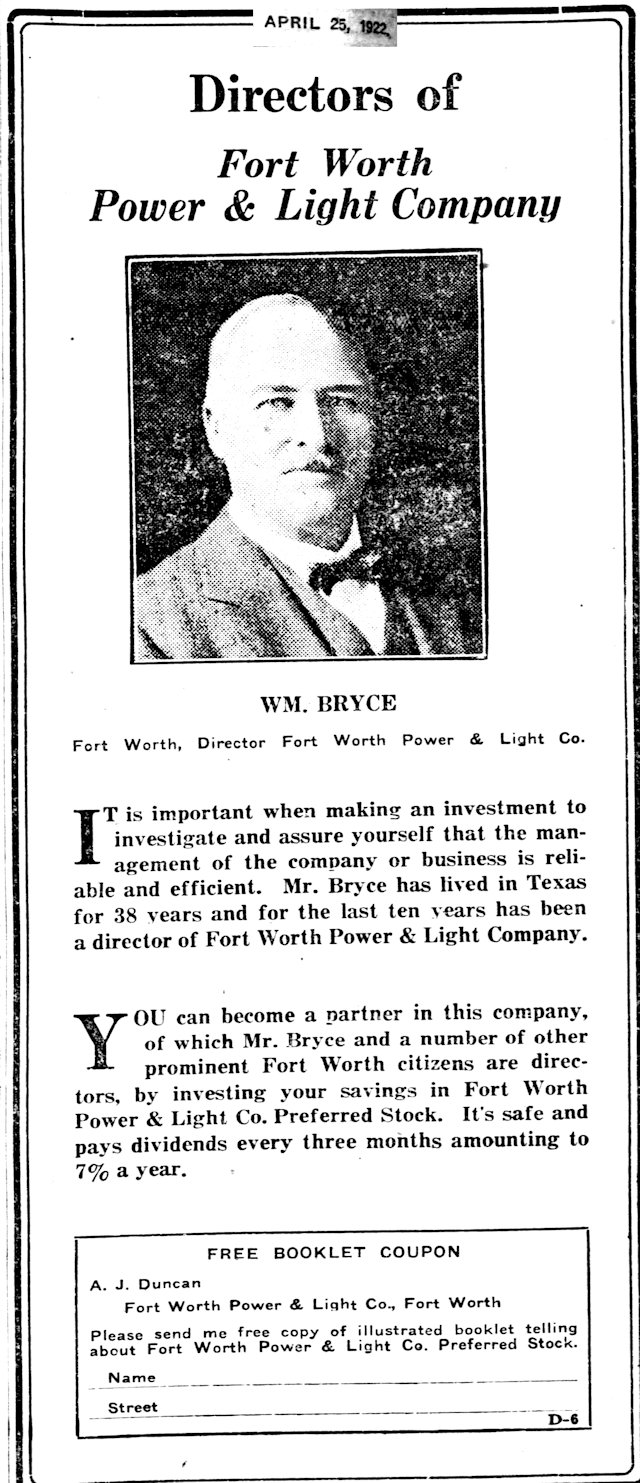 Bryce also was a director of Millers Mutual Fire Insurance Company, Fort Worth National Bank, Mount Olivet Cemetery, and Fort Worth Power & Light Company.
Bryce also was a director of Millers Mutual Fire Insurance Company, Fort Worth National Bank, Mount Olivet Cemetery, and Fort Worth Power & Light Company.
He was president of Drumm Seed and Floral Company and Hillcrest Land Company, vice president of Fairmount Land Company, and secretary-treasurer of Fort Worth Iron and Steel.
And, yes, this mason was a Mason. Also a Shriner, Elk, and Knight of Pythias during the golden age of fraternal orders.
 By 1930 William Bryce’s eponymous street was home to several prominent people:
By 1930 William Bryce’s eponymous street was home to several prominent people:
Robert McCart
Mark W. Hovencamp
Z. Boaz
T. J. Jennings, son of Hyde Jennings and grandson of Thomas Jefferson Jennings
Julia Francis Halsell, widow of early cattleman John Glenn Halsell (1845-1886)
Walter Root Bennett, president of Acme Brick Company. Walter’s wife Ethel was the daughter of Burwell Christmas Evans. Walter’s mother Octavia was the daughter of Harrison Gill Hendricks.
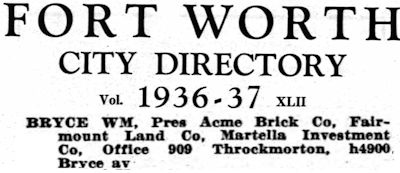 After Bennett died in 1935, Bryce became president and chairman of the board of the Acme Brick Company.
After Bennett died in 1935, Bryce became president and chairman of the board of the Acme Brick Company.
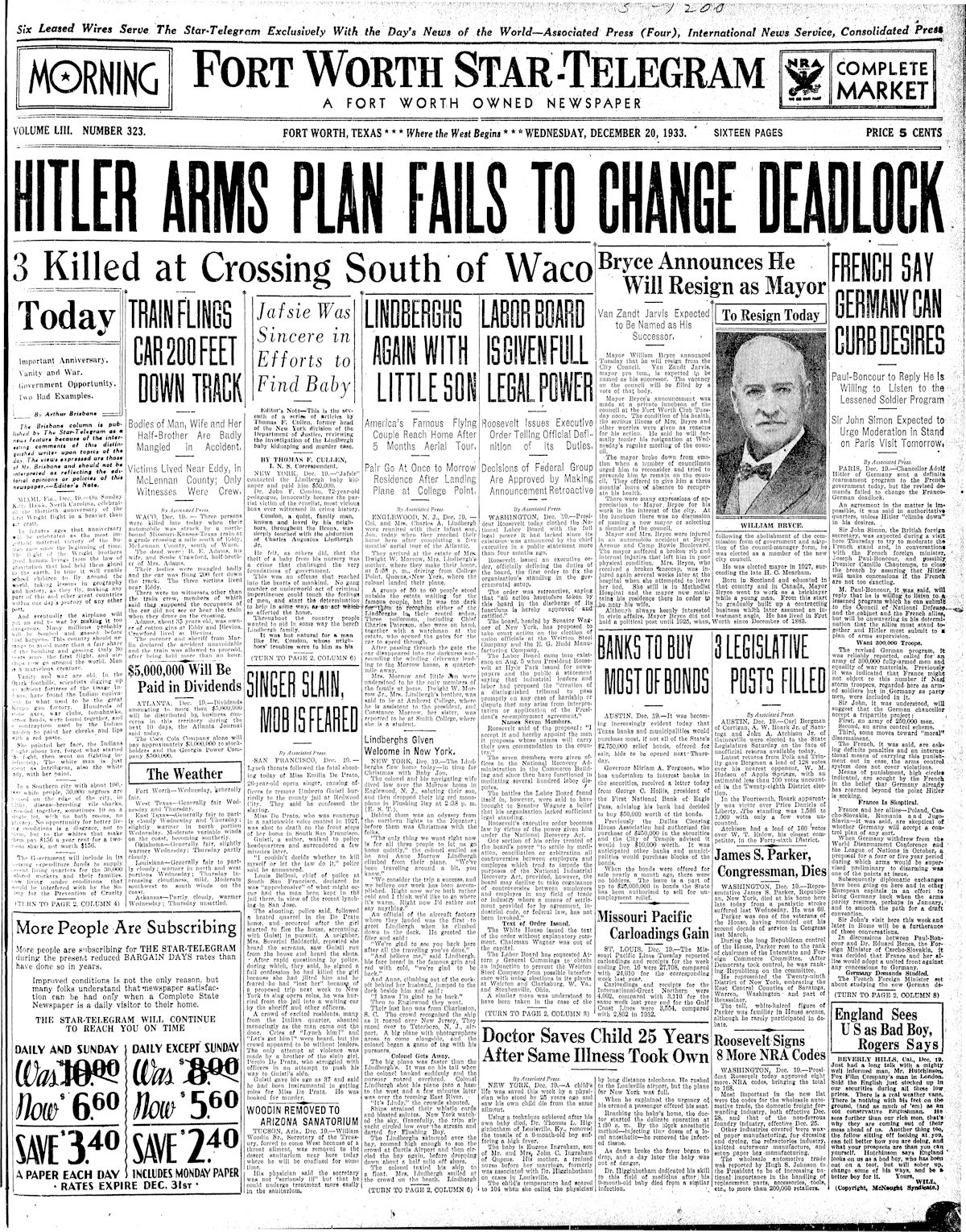 Bryce served as mayor until 1933, when he, too, resigned, citing his health and the health of his wife as reasons. He was succeeded by Van Zandt Jarvis. Bryce’s resignation shared the front page of the Star-Telegram with headlines about Hitler, Lindbergh, and Roosevelt.
Bryce served as mayor until 1933, when he, too, resigned, citing his health and the health of his wife as reasons. He was succeeded by Van Zandt Jarvis. Bryce’s resignation shared the front page of the Star-Telegram with headlines about Hitler, Lindbergh, and Roosevelt.
 William Bryce died in 1944. His obituary appeared on a front page otherwise devoted to news of the war.
William Bryce died in 1944. His obituary appeared on a front page otherwise devoted to news of the war.
 William John Bryce, who went from Woolieburn Farm to Fairview, is buried in Oakwood Cemetery.
William John Bryce, who went from Woolieburn Farm to Fairview, is buried in Oakwood Cemetery.





